Related Research Articles

Yayoi Kusama is a Japanese contemporary artist who works primarily in sculpture and installation, and is also active in painting, performance, video art, fashion, poetry, fiction, and other arts. Her work is based in conceptual art and shows some attributes of feminism, minimalism, surrealism, Art Brut, pop art, and abstract expressionism, and is infused with autobiographical, psychological, and sexual content. She has been acknowledged as one of the most important living artists to come out of Japan, the world's top-selling female artist, and the world's most successful living artist. Her work influenced that of her contemporaries, including Andy Warhol and Claes Oldenburg.
Broadly speaking, modularity is the degree to which a system's components may be separated and recombined, often with the benefit of flexibility and variety in use. The concept of modularity is used primarily to reduce complexity by breaking a system into varying degrees of interdependence and independence across and "hide the complexity of each part behind an abstraction and interface". However, the concept of modularity can be extended to multiple disciplines, each with their own nuances. Despite these nuances, consistent themes concerning modular systems can be identified.
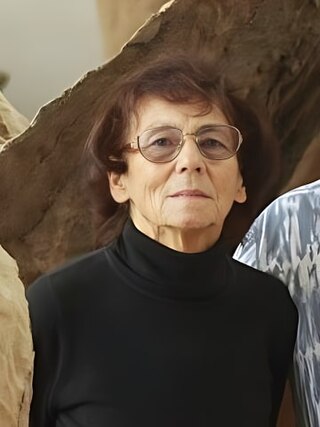
Magdalena Abakanowicz was a Polish sculptor and fiber artist, known for her use of textiles as a sculptural medium and outdoor installations.

The Pennsylvania Academy of the Fine Arts (PAFA) is a museum and private art school in Philadelphia, Pennsylvania. It was founded in 1805 and is the first and oldest art museum and art school in the United States.
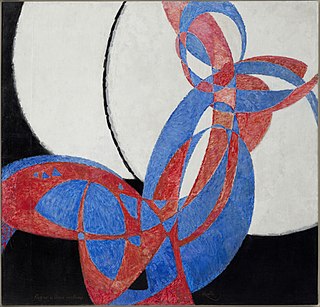
Geometric abstraction is a form of abstract art based on the use of geometric forms sometimes, though not always, placed in non-illusionistic space and combined into non-objective (non-representational) compositions. Although the genre was popularized by avant-garde artists in the early twentieth century, similar motifs have been used in art since ancient times.

Shaped canvases are paintings that depart from the normal flat, rectangular configuration. Canvases may be shaped by altering their outline, while retaining their flatness. An ancient, traditional example is the tondo, a painting on a round panel or canvas: Raphael, as well as some other Renaissance painters, sometimes chose this format for madonna paintings. Alternatively, canvases may be altered by losing their flatness and assuming a three-dimensional surface. Or, they can do both. That is, they can assume shapes other than rectangles, and also have surface features that are three-dimensional. Arguably, changing the surface configuration of the painting transforms it into a sculpture. But shaped canvases are generally considered paintings.

Constructivism is an early twentieth-century art movement founded in 1915 by Vladimir Tatlin and Alexander Rodchenko. Abstract and austere, constructivist art aimed to reflect modern industrial society and urban space. The movement rejected decorative stylization in favour of the industrial assemblage of materials. Constructivists were in favour of art for propaganda and social purposes, and were associated with Soviet socialism, the Bolsheviks and the Russian avant-garde.
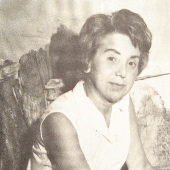
Jane Schenthal Frank was an American multidisciplinary artist, known as a painter, sculptor, mixed media artist, illustrator, and textile artist. Her landscape-like, mixed-media abstract paintings are included in public collections, including those of the Corcoran Gallery of Art, the Baltimore Museum of Art, and the Smithsonian American Art Museum. She studied with artists, Hans Hofmann and Norman Carlberg.

Norman K. Carlberg was an American sculptor, photographer, and printmaker. He is noted as an exemplar of the modular constructivist style.

Erwin Hauer was an Austrian-born American sculptor who studied first at Vienna's Academy of Applied Arts and later under Josef Albers at Yale. Hauer was an early proponent of modular constructivism and an associate of Norman Carlberg. Like Carlberg, he was especially known for his minimalist, repetitive pieces in the 1950s and 1960s.

Teresita Fernández is a New York-based visual artist best known for her public sculptures and unconventional use of materials. Her work is characterized by an interest in perception and the psychology of looking. Her experiential, large-scale works are often inspired by landscape and natural phenomena as well as diverse historical and cultural references. Her sculptures present spectacular optical illusions and evoke natural phenomena, land formations, and water in its infinite forms.

Peter Laszlo Peri was an artist and sculptor.
Dalziel and Scullion are Scottish based artists. Matthew Dalziel and Louise Scullion whom have worked in collaboration since 1993, their studio creates artworks in photography, video, sound and sculpture that explore new artistic languages surrounding the subject of ecology.
Modular art is art created by joining together standardized units (modules) to form larger, more complex compositions. In some works the units can be subsequently moved, removed and added to – that is, modulated – to create a new work of art, different from the original or ensuing configurations.

Heather T. Hart is an American visual artist who works in a variety of media including interactive and participatory Installation art, drawing, collage, and painting. She is a co-founder of the Black Lunch Table Project, which includes a Wikipedia initiative focused on addressing diversity representation in the arts on Wikipedia.
Joyce J. Scott is an African-American artist, sculptor, quilter, performance artist, installation artist, print-maker, lecturer and educator. Named a MacArthur Fellow in 2016, and a Smithsonian Visionary Artist in 2019, Scott is best known for her figurative sculptures and jewelry using free form, off-loom beadweaving techniques, similar to a peyote stitch. Each piece is often constructed using thousands of glass seed beads or pony beads, and sometimes other found objects or materials such as glass, quilting and leather. In 2018, she was hailed for working in new medium — a mixture of soil, clay, straw, and cement — for a sculpture meant to disintegrate and return to the earth. Scott is influenced by a variety of diverse cultures, including Native American and African traditions, Mexican, Czech, and Russian beadwork, illustration and comic books, and pop culture.

Mary Miss is an American artist and designer. Her work has crossed boundaries between architecture, landscape architecture, engineering and urban design. Her installations are collaborative in nature: she has worked with scientists, historians, designers, and public administrators. She is primarily interested in how to engage the public in decoding their surrounding environment.
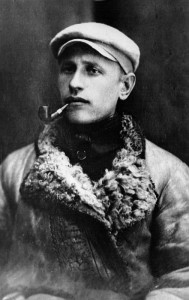
Karl Johansson was a Latvian-Soviet avant-garde artist.
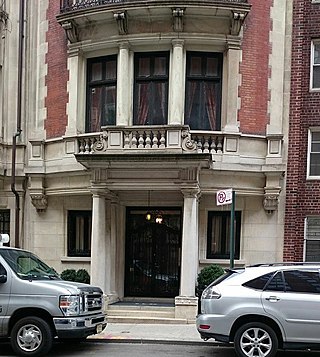
Galerie Chalette was a private contemporary art gallery in Manhattan, New York, USA. It was founded by the married art dealers and collectors Madeleine Chalette Lejwa (1915–1996) and Arthur Lejwa (1895–1972) in February 1954. The Lejwas were refugees from the Nazi invasions of Poland and France. Initially, their gallery specialized in contemporary French and Polish prints and painting. Later they changed its focus to contemporary 20th century American and European Sculpture, and especially the work of Jean Arp.
Stephanie Scuris (1931-2023) was a Greek-American artist and arts educator known for her large-scale Constructivist sculptures. She taught at the Rinehart School of Sculpture at the Maryland Institute College of Art in Baltimore, Maryland.
References
- Galerie Chalette. Structured sculpture : December 1960-January 1961 (New York City : The Gallery, 1960) [exhibition catalogue] OCLC 6027697
- Carlberg, Norman. Norman Carlberg : an exhibition of sculpture [exhibition catalogue] (Exhibition of sculpture : Norman Carlberg : presented by the Pennsylvania State University College of Arts and Architecture, November 5-November 29, 1966) OCLC 81988058; OCLC 82275454 (Worldcat links: ; ; )
- Hauer, Erwin. Erwin Hauer : Continua - architectural screens and walls by Erwin Hauer (New York : Princeton Architectural ; London : Hi Marketing, 2004) ISBN 1-56898-455-3
- Montpelier Cultural Arts Center. Sculpture 2000 : the twentieth anniversary of the Montpelier invitational sculpture exhibition, Montpelier Cultural Arts Center, June 8 - August 18, 2000 [exhibition catalogue] (Maryland : Montpelier Cultural Arts Center, 2000) OCLC 49254937
- Museum of Modern Art (New York, N.Y.). Recent sculpture U.S.A. Sponsored by the Junior Council of the Museum of Modern Art (New York, 1959) OCLC 1097018
- Philadelphia Museum College of Art; Paul Darrow; Ed Rossbach; Walter Reinsel; Antonio Frasconi; Herb Lubalin; Helen Borten; Henry Mitchell; Erwin Hauer; John Mason; Lenore Tawney. Directors' choice : an exhibition at the Philadelphia Museum College of Art, Broad and Pine Streets, January 14 through February 7, 1961 (Philadelphia, Pa. : [Philadelphia Museum College of Art], 1961) OCLC 49120005